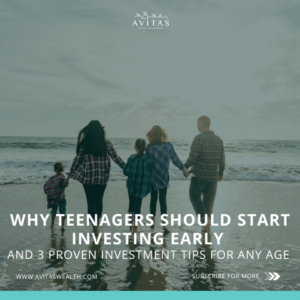 What do all parents have in common? We want the best for our kids. We want our kids to grow up to be independent, healthy adults who can achieve their dreams and live a full life. While money isn’t everything, the ability to manage our money is an important piece of living a healthy life. Our kids ability to manage money will affect every step they take in their adult lives, including getting a job, managing their careers, renting an apartment, buying a home and having a family.
What do all parents have in common? We want the best for our kids. We want our kids to grow up to be independent, healthy adults who can achieve their dreams and live a full life. While money isn’t everything, the ability to manage our money is an important piece of living a healthy life. Our kids ability to manage money will affect every step they take in their adult lives, including getting a job, managing their careers, renting an apartment, buying a home and having a family.
A necessary aspect of managing money is how to earn and grow your money. Teenagers today have an opportunity that most of us never had – the ability to invest in the stock market at an early age and earn compound interest. Most adults were not taught the basics of investing as a teenager, and/or didn’t have access to investing platforms. This means investing may seem too risky, or it could be intimidating to adults. However, if done the right way, investing early can empower teens to create the life they envision.
The ‘right way’, starts with financial education, according to Eddie Behringer, Co-Founder and CEO of Copper Banking, a teen focused banking and financial education platform. Copper was founded with the mission to create the first financially literate generation, and recently launched Copper Investing, the first-ever teen-and-kid-centric Registered Investment Advisor (RIA). Copper research shows that teenagers want to learn about finance and are eager to start investing, but because finance is not taught at schools, most teens don’t understand finance.
– 74%: teens who don’t feel confident about their financial education
– 48%: score on a financial literacy exam given to high school seniors
– 32% of teens can’t tell the difference between a credit and a debit card
– 27%: youth who know what inflation is and can do simple interest rate calculation
“With inflation on the rise, teens need to go beyond saving—they need to learn about growing wealth,” Behringer says. “One of the biggest opportunities for teen wealth-building is time in the market and willingness to take risk. Our research shows teens are eager to get started and with Copper Investing, we will empower them to become savvy investors from a place of financial education so parents can feel secure, too, knowing their teen’s financial future comes first.”
Why Invest as a Teenager:
Build Wealth: Although 2022 was a rocky ride, the market is still the best way to build wealth. Most adults have experienced declines and busted bubbles, and that can make the stock market seem dangerous. However, the natural market cycle includes crashes and growth, ups and downs – and even considering every market event over it’s history, the market has still averaged a 10% yearly return. This means that if a 46-year old adult had invested $1000 at the age of 16, today it would be worth about $17,500. That’s the power of compound interest, and teenagers have a huge opportunity to take advantage of this at a young age.
Empowerment and Independence: Many adults don’t understand investing, and have missed opportunities to build wealth. Teenagers who start early will understand investing, which will allow them to be comfortable with more complex investments as an adult. Investing in the market gives teens a head start in life and the opportunity to build real wealth. This can open opportunities and provide the freedom to reach their dreams and goals.
Inflation: Every year prices increase, and which means your money loses value. Inflation is on average 3%, meaning uninvested cash loses 3% of it’s value each year. Last year illustrated the disastrous effects of inflation. The annual inflation rate for the United States is 7.1% for the 12 months ended November 2022. Even a high yield savings account earning 3% means you were guaranteed to lose over 4% this year.
While investing clearly opens opportunities for teens, this does not come without risk. For investors of all ages, there are some proven guidelines to investing in a smart way.
- Start early. It doesn’t matter how old you are, or how long you waited – start investing now. “Time is the #1 biggest benefit to young investors.” Behringer says. “With a bigger investment horizon, there’s more time for their contributions to grow.”
- Invest often. You may have heard of ‘buy low’ and ‘sell high’. While this is the ideal scenario, no one has a crystal ball or can time the market. That’s why you want to invest on a regular schedule. This way, you will capture both the market highs and lows.
- Diversify. All investments have some risk. In general, the more risk, the more possible loss or gain. Too much risk and you could lose significant money. Too little risk and your portfolio won’t make money. You can minimize your risk by choosing different types of investments, investing in small and large companies and in varied industries. Think of it as ‘Not having all of your eggs in one basket’. If some of your investments go down, it’s ok because you have others that didn’t and will balance those losses. Teenagers can take more risk, because they have more time for their investments to recover and grow. Adults nearing retirement should take less risk because they will need their money sooner. Mutual funds and ETFs are great ways for investors to diversify, because they are premade ‘baskets’ of investments. Copper Investing uses a proprietary questionnaire that follows industry best practices to specifically assess the risk tolerance of its users. Then, it pairs them with a carefully crafted portfolio within their investment comfort zone.
Finance doesn’t have to be complicated or intimidating, and platforms like Copper can provide simple financial education targeted to young people. If we as parents can remove the taboo and fear around finance, and expose our kids to saving and investing at an early age, we are setting them on a path to lead financially healthy and independent lives as adults.
See the article here.
By Liz Frazier, Contributor at Forbes
Published February 1, 2023
